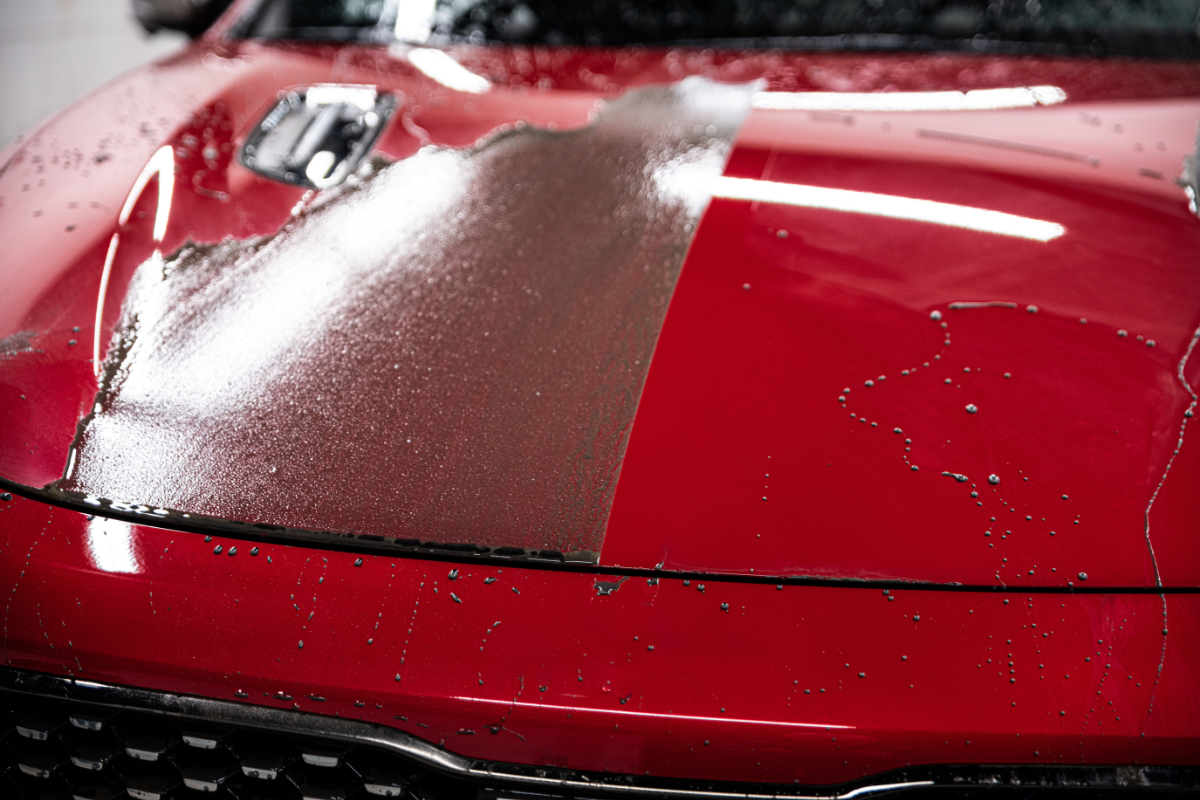Leading Ceramic Coatings San Jose Solutions for Automotive Quality
Leading Ceramic Coatings San Jose Solutions for Automotive Quality
Blog Article
Introducing the Science Behind Ceramic Coatings: Just How Does It Work and Why Is It Above Traditional Alternatives?
Ceramic finishes have been acquiring appeal in various sectors for their phenomenal performance and sturdiness. The science behind these finishes exceeds mere surface protection, delving into the complex chemistry that makes them stand out from standard options (ceramic coatings san jose). Recognizing exactly how ceramic coverings work and why they outmatch traditional choices is essential for those looking for to boost the longevity and durability of their products. So, exactly what sets ceramic finishings apart, and exactly how do they attain such amazing results?
The Chemistry of Ceramic Coatings
In recognizing ceramic coatings, diving right into the complex chemistry behind their composition is essential for grasping their performance and resilience. Ceramic coatings are mainly made up of silicon dioxide (SiO2), which develops a strong and safety layer when related to numerous surface areas. This chemical structure supplies exceptional resistance to warm, chemicals, and corrosion, making ceramic coatings highly demanded for a large range of applications.
The chemistry behind ceramic coatings includes the formation of covalent bonds in between silicon and oxygen atoms, creating a rigid network that enhances the layer's strength and durability. In addition, the visibility of other components such as aluminum, titanium, and zirconium additional improves the coating's buildings, supplying raised firmness and attachment to surfaces.
Comprehending the chemical make-up of ceramic finishes enables for the personalization of formulas to match certain needs, whether it be for vehicle, commercial, or property objectives. By taking advantage of the power of chemistry, ceramic layers proceed to pave the means for exceptional security and performance in various industries.
Benefits of Ceramic Coatings

As a result, ceramic coatings make cleaning and maintaining surface areas much simpler and less lengthy. In general, the plethora of benefits provided by ceramic layers make them a premium alternative contrasted to standard coating techniques.
How Ceramic Coatings Bond
Ceramic coverings bond to surfaces through a process that entails molecular attachment and chemical interactions. When a ceramic layer is used to a surface area, it forms a solid bond by chemically adhering to the surface area at a molecular level.
Furthermore, the chemical interactions in between the ceramic layer and the surface area better enhance the bond. ceramic coatings san jose. These communications enable the ceramic covering to create a smooth and constant layer on the surface area, giving exceptional defense and resilience. Unlike typical coatings that might remain on the surface without fully bonding, ceramic finishes create an irreversible bond that is immune to chemicals, UV rays, and rough environmental problems

Essentially, the bonding device of ceramic coatings makes sure a efficient and durable protective layer that outmatches traditional layer alternatives. This exceptional bond adds to the durability, scrape resistance, and longevity of ceramic finishes, making them a important site recommended selection for numerous applications.
Durability of Ceramic Coatings
The outstanding longevity of ceramic finishes stems from their robust molecular bond and chemical interactions with surface areas, making certain a resilient protective layer that surpasses standard covering choices. When applied, ceramic coverings develop a solid bond with the substratum, creating a resilient obstacle against different ecological stress factors such as UV radiation, chemicals, and abrasions. This bond is so safe that it can stand up to the roughness of day-to-day usage without degrading or deteriorating quickly.
Unlike traditional finishes that may weaken gradually, ceramic coatings maintain their honesty for an extensive duration, offering durable protection for the underlying surface. The strong molecular structure of ceramic coverings withstands cracking, fading, and peeling, making sure that the surface area continues to be secured and cosmetically pleasing for many years ahead. This longevity not only minimizes the need for constant reapplications but also conserves money and time in the lengthy run. In general, the phenomenal durability of ceramic coatings makes them a premium option for safeguarding a wide variety of surface areas in various applications.
Ceramic Coatings Vs. Standard Alternatives
In contrast to standard covering methods, ceramic finishes use a distinctive blend of toughness and safety abilities that set them apart in different surface area defense applications. Typical choices such as wax Resources or sealers give a momentary layer of protection that can put on off rapidly, needing regular reapplication. On the other hand, ceramic layers create a solid bond with the surface area, creating a semi-permanent or irreversible obstacle that is extremely resistant to abrasion, chemicals, UV rays, and extreme temperatures.
Moreover, ceramic layers provide superior hydrophobic homes compared to standard finishes. The hydrophobic nature of ceramic layers creates water to grain up and roll off the surface, lugging dirt and pollutants with it. This self-cleaning result assists to preserve the surface's cleanliness and gloss for prolonged periods, decreasing the need for constant maintenance.
Furthermore, ceramic finishes have a thicker layer compared to typical choices, offering boosted scratch resistance and security against small impacts. This resilience makes certain long-lasting efficiency and helps protect the aesthetic charm of the treated surface for a prolonged period.
Verdict
To conclude, Visit Website the scientific research behind ceramic finishings lies in their chemical composition and bonding properties, making them remarkable to conventional options. The advantages of ceramic coverings include enhanced resilience and security for surface areas. By recognizing just how ceramic coverings work and their advantages over conventional options, one can make informed decisions when taking into consideration finish options for numerous applications.
Unlike conventional layers that may rest on the surface without fully bonding, ceramic finishings produce a long-term bond that is immune to chemicals, UV rays, and severe ecological problems.
The exceptional durability of ceramic coverings stems from their robust molecular bond and chemical interactions with surface areas, making sure a sturdy protective layer that surpasses conventional covering choices.Unlike standard coverings that may deteriorate over time, ceramic layers maintain their integrity for a prolonged duration, offering resilient defense for the underlying surface area.In contrast to traditional coating methods, ceramic finishings offer a distinctive mix of toughness and safety abilities that set them apart in various surface protection applications. By recognizing just how ceramic finishings work and their advantages over traditional alternatives, one can make informed choices when taking into consideration covering alternatives for various applications.
Report this page